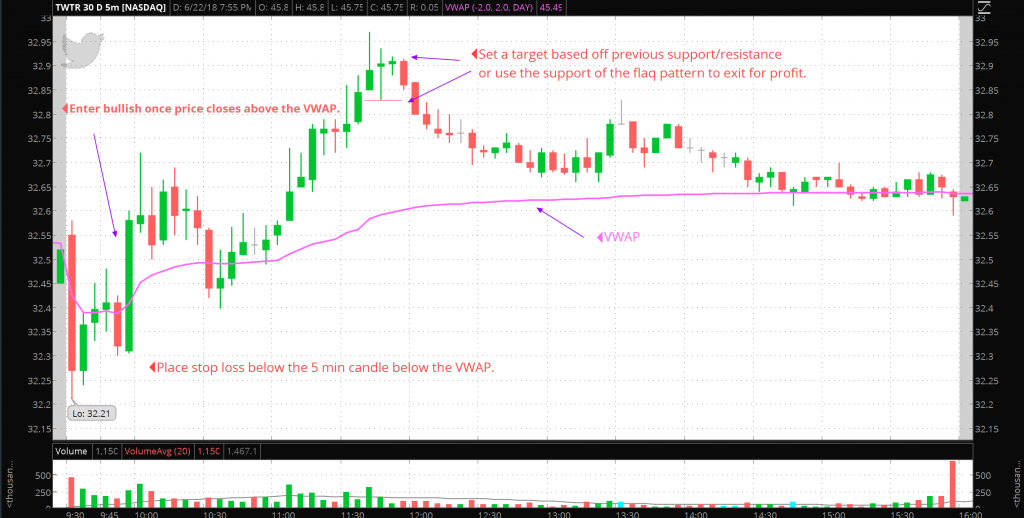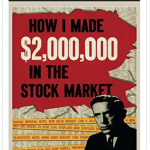This guide is not so much about the detailed steps of how to create a trading strategy but will go more into what to do while you build out your first trading or investing strategy. The specifics for how to build your strategy are completely up to you. Use the power of your inner trader to develop a simple and easy trading strategy. Simple and easy is the key as too much information is typically not a good thing when it comes to trading the market.

Now that you have all this delicious brain food of trading and investment knowledge, it’s time to start putting that knowledge to work. Knowledge is power, but what’s the use of having a power that you don’t use right? Anyway, without getting too preachy…
By this point you should have an idea of which direction you want to take you trading. If not, don’t worry, it doesn’t have to be solid by this point. For instance, my interests began in swing and day trading stocks, then swing trading options on stocks, followed by forex, before I eventually settled on day trading futures, all in about a three-month span.
Lay the Foundation
For this next phase you will be using what you learned to start developing your strategy. There are tons of ways you can go about building your strategy. As well, there are dozens of resources at your fingertips, from websites, to trading platforms, to apps. The world of trading is literally as easy as the click of a mouse. These sources will be key in your strategy development.
There’s so much information that it can feel a bit overwhelming when starting. Just pick the asset class and time frame (day trading, swing trading, or long-term investing) that interests you the most and go from there. Chances are this will change and evolve as time and your experience progress, but you just have to take the first step and get started. You can look at this phase as laying out the foundation of your strategy.
Disclaimer! Once you build out this foundation of your initial strategy, it is extremely important you do not stray away from this foundation. You can make adjustments but do not change this strategy. Here’s the thing. All strategies work! Yep, every single strategy you can imagine works, just not all the time. More importantly, your strategy is not going to be what makes you a successful trader. Your thoughts and emotions are going plays a huge role in your success as a trader. What you do not want is your strategy adding to the difficulty of overcoming the psychological barriers you are bound to face. If you don’t pay attention to anything else in this guide, remember this. DO NOT change your initial strategy. Once you have mastered the psychological aspects of trading you can use whatever strategy you want. And by this time, you will have a solid strategy that you can always revert back to when things start getting shaky elsewhere.
Don’t Test with Real Money
Once you have created the framework for your strategy you will want to test it out. The best way to do this is by using a paper trading account. This step will get you familiar with your strategy as well as build confidence in your ability to successfully trade the strategy. As with most things, practice makes perfect. The more you practice using a paper trading account the better you will become at executing your strategy, relieving the stress of making unnecessary mistakes in a live account. The more mistakes you make here the better as people typically learn their most valuable lessons from mistakes. You want to make the mistakes here, (not on purpose of course) so you learn from it without wasting your hard-earned cash. It already sucks to lose money trading which is inevitable. What’s worse is losing real money doing something stupid.
Testing Tools

No matter which direction you decide to take your trading journey, there are many platforms available. Some paid, most for free, that offers paper trading. One of the most readily available paper trading platform can be found on Investopedia’s website. If you open a TD Ameritrade account, you will have free access to their paper trading, called paperMoney, on their Thinkorswim platform that allows you to paper trade just about every asset class. Some of the data on their paper trading platform is limited, but what I do is use the data on their live platform and sign into paperMoney on the mobile app to place the paper trade. It can take a bit longer to place an order on the mobile app but since I’m only paper trading I’m not too worried about timing.
Taking things one step further, some platforms, such as Thinkorswim, has tools where you can back-trade a previous day as if you are trading it real-time. These tools are essential to fine-tuning the execution of your strategy. TradingView also has this feature, called Replay, that I use frequently. I prefer Thinkorswim’s OnDemand vs. TradingView’s Replay, as Replay will only ‘replay’ the chart information. You won’t be able to trade it with paper money. These are the only two I know of. Check with your broker to see if they have a similar feature in their platform, as you will want to do this with the same platform you trade real money.
TradingView also has a user-friendly paper trading platform which allows you to place trades directly from the chart. TradingView also gives you plenty of details about the paper trades you placed. You can sign-up for a free account and have immediate access to their paper trading platform, as well as some additional features beyond what you get without an account. They also offer free trials to their more advanced features and data. Click the image below to get started with TradingView.
Example
Here’s an example of how this process would work. Keep in mind, this is only an example. I am in no way telling you to use this specific information as a strategy for any asset class.
So, let’s say you have decided day trading stocks using the VWAP is the direction that seems the most interesting to you. Let’s add more detail to that and say you want to trade stocks in the range of $10 – $50 because that fits your budget and you favor the typical price action of those stocks. To begin, you will pick a stock that you know and like in the desired price range. For our example we will use Twitter, ticker symbol TWTR. Pull up a chart using and plug in the ticker. You will want to use the platform you plan to use to trade real money if they have a paper trading companion, which most do. That will help you build familiarity with the platform minimizing mistakes for not being well acquainted with how the platform works. For our example here, I will use TD Ameritrade’s Thinkorswim.
Once you have the chart up with TWTR’s data, start looking for patterns you could take advantage of based off the price action in relation to the VWAP. Of course, for this you will be looking at historical data, rather that’s the previous day, a day from last week, a day from last year, or whatever. My recommendation here is to look at as many different days as you need to. This is what’s called back-trading, which helps you build the memory muscles needed to execute your strategy with minimal mistakes.

Once you feel you are comfortable with the VWAP and the stock you chose, you will then pick another stock and do the same thing all over again. It is highly recommended to go through this back-trading process as much as possible without letting it consume your life outside of the stock market, of course.
If your knowledge building phase was thorough enough, you would know the importance of also looking at multiple timeframes for your strategy. For example, using the same day trading off the VWAP strategy, taking a look at the five-minute, 1 minute, and daily charts could be very beneficial to helping you make trading decisions.

In the beginning, this may seem very time consuming but the more you practice this the faster and more accurately you will be able to flow through this process. Just like a basketball player practicing his jump shot. At first, he will struggle to make baskets with the appropriate form. But over time, with practice, the shots will start going in more frequently with greater accuracy, requiring less mental effort. The same is true for making money in the stock market.
Keeping Track of Your Progress.
It’s a good idea to have a spreadsheet to track your trades. This will help you see the big picture of how well your strategy, and more importantly your trading habits, are performing. If you like you can email me at robwill@mv3trader.com for a sample spreadsheet tracker. There are also numerous examples available on the internet which can be found with a quick Google search. Some information you may want to keep track of is:
- Entry and exit price
- Entry and exit time
- Date trade was place
- Date trade was exited (if different from entered)
- Profit and loss
- Number of shares
- Notes of thoughts, feelings, and reasons for taking trade.

You can also sign-up for a Tradervue account where you can input your trades for purposes of tracking. Tradervue also breaks down your trades which allows you to see an abundance of statistics which can be used to optimize your trading strategy. For example, your accuracy, your total P&L, your performance at specific times of the day and much more. For paper trading you may need to input the data manually. Tradervue has linked with most brokers to input the data directly from your brokerage account.
Get Out There and Take Action
Now it’s your time to get started building out your very own strategy and putting it to the test. Remember, the key takeaway here is it’s not the strategy that makes or breaks the trader. It’s the mentality of the trader that separates the winners from the losers. You are building your strategy here to have a methodical way of getting hands-on experience with trading the market. In the famous words of Ms. Frizzle (Magic School Bus) take chances, make mistakes, and get messy. Did I just show my age?
Get out there and crush it!
For real-time insights follow me on Twitter! @Mv3Trader
Comment below with your opinions and questions.
Rob
Mv3 Trader
“Trade Consciously”









